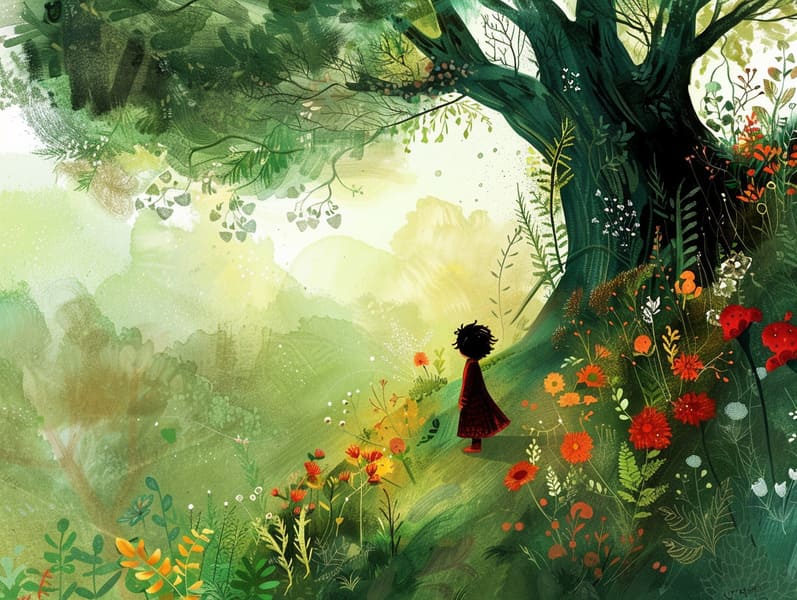The Story Behind Famous Fairy Tales with the Invariable Grace.
The Story Behind Famous Fairy Tales with the Invariable Grace.
Blog Article

Fairy tales have timeless appeal. These narratives have been narrated from one generation to the next centuries before they were ever documented. They arose from a variety of cultures, including Eastern traditions. They were initially narrated among elders, often carrying themes and messages aligned with the societal norms and beliefs of the time.
The Grimm brothers, the two Grimm brothers, were among the first to compile many of these beloved stories. Their compilation, "Grimm's Fables," included classics like "The Story of Cinderella," "The Story of Hansel and Gretel," and "Schneewittchen," which have since become essentials in the world of timeless fairy tales. Similarly, H. C. Andersen's whimsical narratives, such as "The Story of the Little Mermaid," and "The Ugly Duckling," have stolen hearts worldwide, solidifying their place in the pantheon of treasured fairy tales.
Even though they are old, these tales remain as relevant as ever, especially as kids' bedtime tales. These magical stories are now available in multiple formats, including artistically illustrated books, fantastical animations, and internet fairy tales.
Their continued relevance can be ascribed to several fascinating points:
Significant Morals: Old fairy tales often provide important moral lessons. Stories like "The Story of the Boy Who Cried Wolf" teach the value of truth, while "The Race of the Tortoise and the Hare" underline the traits of perseverance and meekness. These tales offer young ones clear distinctions between truth and falsehood, forming their moral compass in a tender yet lasting way.
Compassion and Knowledge: Traditional fairy tales frequently feature individuals facing trials and tribulations, motivating young listeners to empathize with their struggles and encourage their triumphs. For instance, "The Story of Beauty and the Beast" points out the virtue of looking deeper to see the real character of a being, cultivating perception and appreciation.
Cultural Recognition: Many traditional fairy tales are deeply embedded in the cultural contexts from which they originated. Understanding these fairy tales can provide enlightening views into different historical contexts, advancing a sense of global respect and appreciation.
Inventiveness and Imagination: The imaginative elements in fairy tales—wizardry and magic—kindle children’s creative dreams. These stories lead readers to supernatural realms, stimulating fantasy-filled thoughts and a sense of enchantment that stays a lifetime.
Traditional fairy tales are not only bewitching but also didactic. They serve as spellbinding tools in promoting various cognitive and emotional skills in the young. When fairy tales are spoken, they strengthen speaking abilities by introducing new vocabulary and intricate sentence structures. This practice also advances auditory skills and mental focus, as children concentrate deeply, keen to see what happens next.
Furthermore, examining the themes and characters of fairy tales can enhance problem-solving abilities and critical thinking. Young readers learn to pinpoint patterns, forecast, and understand cause and effect. These explorations also help young ones convey their thoughts and feelings, enhancing their emotional intelligence.
In today’s technological era, the accessibility of digital storybooks has made these tales more obtainable than ever. Websites and apps share extensive collections of ancient fairy tales that can be browsed or listened through anytime, anywhere. Fairy tales told out loud are particularly liked, featuring an captivating way for kids to relish these captivating stories. Audiobooks and read-to-me videos take characters and settings to life, often augmented by charming audio effects and background music that boost the storytelling experience.
The enduring charm of old fairy tales lies in their ability to evolve to modern times while sustaining their core messages. Contemporary revisions of these stories often introduce more different figures and modern settings, making them pertinent to today’s audience. However, the fundamental themes of heroism, empathy, and justness remain unchanged, continuing to strike a chord with listeners of all ages.
Timeless fairy tales also offer a sense of serenity and closeness. They confer upon a structured narrative with a transparent beginning, middle, and end, often finishing with the solving of conflicts and the triumph of justice over injustice. This dependability can be easing for young ones, showcasing a sense of sturdiness in an fluid world.
Classic fairy tales continue to enthrall and inform new generations, maintaining their allure and applicability in modern society. As bedtime stories for kids, they supply a perfect blend of fascination and comprehension, boosting moral values, empathy, and creativity. The proliferation of free fairy tales online and the prevalence of fairy tales narrated make sure that these old narratives remain within reach to new generations.
By perpetuating and disseminating these narratives, we continue to appreciate the rich tapestry of cultural heritage and cultural heritage. Whether you are discovering a gorgeously illustrated book, accessing a digital library, or listening on an read-aloud story, the wonder of children's fairy tales is always within reach. These stories point out of the unceasing influence of storytelling and its ability to link us across generations and cultures.
Whether you are experiencing a artistically illustrated book, enjoying a online library, or listening via an voice book, the appeal of traditional fairy tales is always within reach.
These stories point out of the unending nature of tales and its ability to gather here us across eras and regions, forming a connection that captivates and teaches alike.